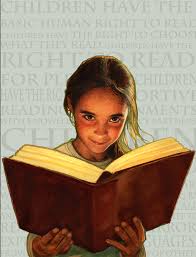This is a continuation of my post yesterday.
Here are further extracts from the article and my comments.
"When educators understand how the brain learns to read we are compelled to reexamine our previous beliefs about why students struggle."
My comment: Does anyone really understand how the brain learns to read? If we do, then how is it
that the number of kids leaving school as illiterate is still more or less the same as decades ago.
I know why students struggle and that is what I have written on my blog since 2010. That is what I have written to educators, universities, educational institutions and ministers over the years but who understand or accepts what I am talking about.
Our Beliefs Shape Our Expectations
Recently, a brave group of teachers who had shifted to scientifically-aligned reading instruction reflected on their old beliefs.
A kindergarten teacher explained to the group:“I think teachers like to believe that every child learns to read differently because it explains our lack of success.”The others nodded in agreement.A second grade teacher added:“It seems to explain the spread of abilities in our classrooms. Like, ‘They all learn to read differently and that’s why a third of my students can’t read.’ It seems to give a reason for why we didn’t reach them all.”And another added:“It justifies the lag. When some kids start to fall behind, we can tell ourselves, ‘Some of them are just learning differently. They’ll catch up later.’”
My comment: Teachers and parents have been indoctrinated by the people with a vested interest with articles written on a regular basis on why kids are unable to read. They have coined up all types of excuses that are accepted by most as per the discussion above.
The hardest part of coming to understand the science of reading is realizing that the learning delays we’ve come to expect in the primary grades can be an early sign of reading failure.
We cannot read the tea leaves of the behavior of five year olds and definitively determine who is going to be dyslexic and who isn’t, moreover, it’s going to depend on how they are taught.
My comment: This article is by those promoting the Science of Reading and they are just marketing their products without knowing why the one third stated above is reading failures.
The second paragraph is of special interest – ‘who is going to be dyslexic and who isn’t, moreover, it’s going to depend on how they are taught.’
This ties in with what I have been saying all these years. Most of these so called dyslexic kids are instructional casualties. How kids are taught will depend on who is ‘going to be dyslexic’.
The question of how they are taught and why they ‘BECOME DYSLEXIC’ has not been addressed by the SoR. What has SoR said that is new and will reduce illiteracy.
So, we’ll cast a wide net, we’ll find the kids who seem to be falling behind, on things like “Do you know your letter names?” “Can you associate a sound with the letter?” “Have you begun to start sounding out simple words?”
My comment:
i. Almost all will know their letter names. This can easily be tested by any teacher.
ii. Associating the sounds with the letter will be the main problem. This too can be tested by the teachers.
iii. Most of them will not be able to sound out simple words.
There are a number of very simple sorts of measures you can use to find the children who are at risk… they get extra help, extra monitoring, and many of them will go on to become fine readers.”
My comment: Yes, with intervention almost all the kids can be brought to grade level and maintained at grade level as stated in the book by Dr. David Kilpatrick. However, if we teach correctly from the onset we will need no intervention.
What are the ‘simple sort of measures you can use to find out the children who are at risk’?
